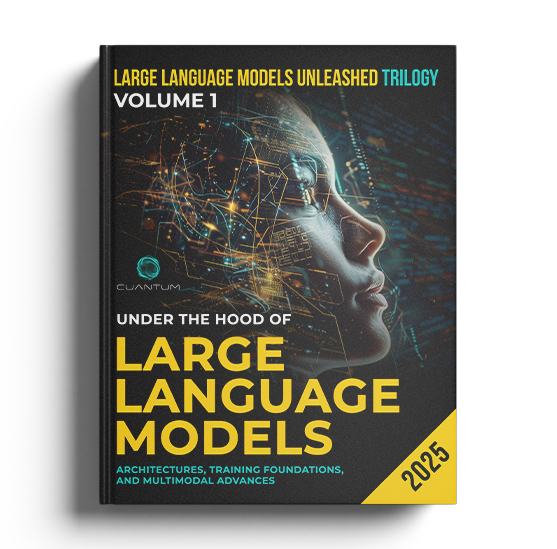Transformers have changed the landscape of natural language processing by enabling models to handle long-range dependencies and parallelize training in ways previously unimaginable. This section of the book demystifies the inner workings of transformer models, including the key concepts of attention mechanisms, positional encodings, and the layer-by-layer construction that makes these models uniquely powerful.
Through detailed diagrams and step-by-step explanations, readers will grasp how transformers process and generate language. The book also covers the evolution of transformer architecture from early models like the original Transformer to newer variants like BERT, GPT, and T5. Each model is explored in context, with examples demonstrating their specific strengths in tasks like text classification, machine translation, and more.
In addition to explaining the architecture and evolution of transformers, the book delves into the optimization techniques that enhance model performance, such as hyperparameter tuning, regularization, and advanced training strategies like transfer learning and fine-tuning. These topics are critical for developing efficient and robust NLP models that can scale to meet the demands of large datasets and complex language tasks. The section provides practical advice on optimizing your transformer models, including selecting the right learning rates, batch sizes, and activation functions, along with strategies for avoiding common pitfalls like overfitting.
With a solid understanding of transformer architecture, the book shifts focus to practical applications. This section teaches you how to implement transformers in a variety of NLP tasks, such as sentiment analysis, named entity recognition, and question answering. It includes practical guides on using popular libraries like Hugging Face's Transformers to quickly and efficiently build, fine-tune, and deploy NLP models.
Readers will learn how to prepare datasets, select the appropriate pre-trained models, and adjust training parameters to maximize model performance. Real-world case studies provide insights into how transformers are being used in industry today, from enhancing customer service with chatbots to developing more accessible language technologies for global languages.
Additionally, this section delves into the intricacies of integrating transformers with existing data pipelines and IT infrastructures, crucial for deploying these technologies in large-scale, real-world applications. It offers strategies for managing the computational demands of transformers, including the use of distributed computing and cloud platforms, which are often necessary to handle the training and inference phases of large models. Practical tips for model serving, monitoring, and continuous improvement are discussed to ensure that NLP systems remain efficient and effective over time.
"Natural Language Processing with Transformers: Fundamentals and Core Applications" not only teaches the technical skills needed to implement transformers but also encourages readers to think critically about the ethical implications of automated language processing. The final chapters discuss the challenges of bias and fairness in AI models, preparing you to build more ethical and equitable AI solutions.
This content is crafted to give a thorough overview of the book, showcasing both the technical depth and the practical applications of transformers in natural language processing. If there are additional elements or specific aspects you'd like included, feel free to let me know!
To further empower readers in responsible AI development, the book also explores the impact of NLP technologies on society at large, emphasizing the importance of inclusive and accessible language technologies. It provides guidelines for developing multilingual models that can serve diverse global communities, thereby reducing language barriers and promoting cultural exchange.
Additionally, the text discusses the potential of NLP in assisting with humanitarian efforts, such as crisis response and accessibility enhancements for individuals with disabilities. This broader perspective helps technologists understand the profound societal implications of their work and the potential of NLP to contribute positively to various aspects of human life.












